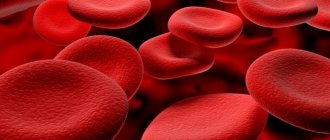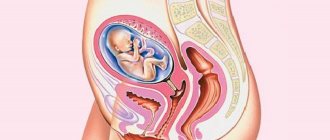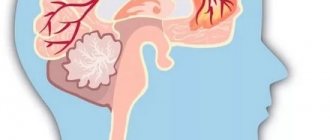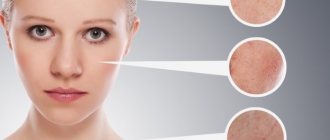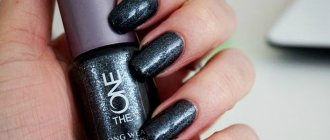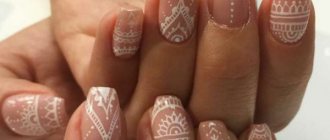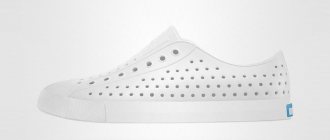Experts have a medical term for white spots under the nail plate - leukonychia.
The appearance of nails, hair and skin can tell medical specialists a lot about the patient's health status. White spots on the nails can be a harbinger of serious problems in the body and lead to disastrous consequences. Experts explained why this symptom manifests itself, how to treat it, and what vitamins a person lacks to restore balance.
Causes of white spots on nails
The main cause of white spots is a violation of the process of keratinization of the nail (keratization). What does this mean: microscopic layers of air form between the layers of the nail plate, which replace the fat and water that are normally present there. Air gaps look like white spots; there is no white pigment in the nail.
Violation of keratization occurs due to reasons of exogenous and endogenous nature:
External reasons
Internal reasons
If white spots are found under the nails, i.e. on the regrown part, in most cases this is the result of damage or a consequence of nail brittleness.
When nail disease is a sign of internal disease
Unhealthy nails may change color, shape or texture. Here are a few diseases that are “alarm bells” indicating the presence of various, sometimes serious, ailments.
Detachment – psoriasis, fungus, allergies, somatic diseases, injuries
First, the nail plate turns white and then peels off from the bed. A void forms between them, which is why the plate changes its color.
Delamination of the nail plate - calcium deficiency, heart disease and endocrine disorders
Among the reasons for “layering” may be the use of “aggressive” files, and improperly processed nails during manicure.
White spots – unbalanced diet, heart failure, stress, injury
White spots on the nails are leukonychia. In fact, these are small air bubbles between the layers of the nail plate. They can be located pointwise, or they can affect the entire nail plate.
Discoloration – anemia, gastrointestinal problems, hormonal imbalances
If your nails turn from natural pinkish to bluish, white or yellow, it means that something is wrong in the body. Nails turning blue - low hemoglobin, poor circulation or oxygen starvation. Nails turn white - problems with the liver, digestion or blood vessels; Nails turned yellow - liver disease, impaired lymph flow or hormonal imbalances. Other factors that can cause yellow discoloration include smoking, advancing age, taking medications, contact with toxic household chemicals, or using inferior nail products.
Microscopic pitting on the nails – arthritis, psoriasis or eczema
It looks like this: the nail plate is covered with pinpoint depressions, as if from a needle prick.
Brittle nails – vitamin deficiency, diabetes or thyroid disease
If the free edge of the nail practically does not grow back, but immediately breaks, the body needs vitamin A, E and C, iron and zinc.
Vertical grooves on the nails - lack of vitamins and microelements, heart or digestive problems, injuries during manicure
For older people this is the norm, but for people under 50 years old it is not. In addition to diseases, grooves can remain after a manicure or pedicure. For example, if a nail technician damaged the base of the nail or left cuts from a hardware cutter.
Horizontal grooves – injury, taking powerful medications or infection
Such lines appear when the nail plate lacks nutrition. In this case, the depleted tissue changes its composition, and deformations appear on the surface of the nail. This can happen if you exhaust yourself with diets or eat poorly and lack variety.
Spoon-shaped nails – genetics, endocrine disorders, iron deficiency or injury
The sagging of the center of the nail plate is called koilonychia. It does not cause pain or discomfort, but it looks extremely unaesthetic.
Classification of leukonychia
Leukonychia is classified according to its prevalence:
- Limited, arising due to partial disruption of keratinization of the nail. As a rule, 1-2 nails are affected.
- Total, involving the entire nail or all nails at the same time.
According to the shape of the spots, they are distinguished:
- Point leukonychia in the form of white dots, small or large, multiple and single.
- Striped in the form of white stripes with a horizontal or vertical arrangement on the nail plate.
Characteristics of leukonychia depending on the reasons that caused it
- Nail injuries are pinpoint spots, less often strip-like, with a chaotic location. The nail is affected to a limited extent
- Depression, nervous exhaustion - a large white spot in the center of the nail. Disappears as its regrowth grows
- Nutritional factors (fasting, diet, unbalanced diet) - paired white stripes with a transverse arrangement
- Seasonal hypovitaminosis (spring) - single white spots
- Long-term hypovitaminosis - multiple white spots, accompanying fatigue, dry skin, hyperkeratosis
- CRF - extensive white spots on the bottom of the nail plate, the top has a healthy color
- Diseases of the cardiovascular system - white spots on the nail plate, which have a bluish tint
- Diseases of the digestive system - total damage to the nails, often on the toes
- Fungus - white spots on a limited area of the nail, yellowing and softening of the plate, thickening, delamination, unpleasant odor from the affected nail. When the process spreads, several nails are affected.
Keratolic nail removal patch
Today, onychomycosis affects a fairly large number of people and is difficult to treat. Often, specialists come to the decision of eliminating the affected plate, and one of the modern methods is a keratolytic patch for removing nails.
An insidious disease that affects the nail can spread even into the nail bed. Subsequently, the nail plate becomes porous and thick, and therefore the disease can then spread to the rest of the nails.
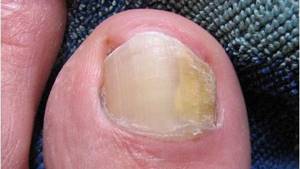
In what cases is nail removal prescribed?
Removal of the affected plate will be carried out only when drugs and other methods of solving the problem are not effective. In order to avoid negative consequences, the patient will have to undergo a nail removal procedure.
Situations in which doctors advise removing the nail plate:
- Advanced stage of onychomycosis - in such a case, types of fungal infection cannot be treated with medications. Due to fungal infection, the nail plate becomes excessively deformed and changes color. If specialists note that there is virtually no chance of correcting the situation, they cleanse the skin under the nail in order to eliminate fungal pathogens.
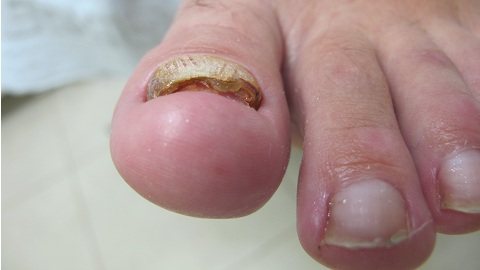
- If, against the background of onychomycosis, the problem of an ingrown nail has developed, manifested by swelling and redness of the nail fold.
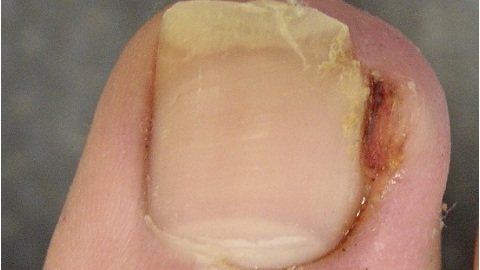
Application of keratolytic patch
This method of combating onychomycosis ensures the softening of the plate so that it can then be easily and painlessly removed. You can remove the diseased nail with scissors or a scalpel.
Before the procedure, an adhesive plaster is applied to the healthy skin around the affected area to protect it from the effects of the keratolytic agent. After this, the mass is applied to the nail plate approximately 2 mm thick and fixed with an adhesive plaster. After three days, the nail will become soft and can be easily scraped off.
Removing the nail is only the first stage of therapy. Removing the plate eliminates the focus and helps the antimycotic substance penetrate deeper. Once the result is achieved, it is necessary to carry out complex therapy using fungicidal agents.
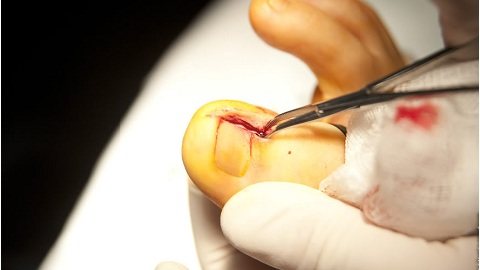
How to properly care for your nail after removal?
After eliminating the affected nail plate, more thorough care is required to ensure recovery is faster and more effective. To do this, patients must adhere to some rules:
- Try not to put your body weight on the foot with the affected nail.
- If necessary, use painkillers.
- Before dressing, you need to thoroughly disinfect your hands.
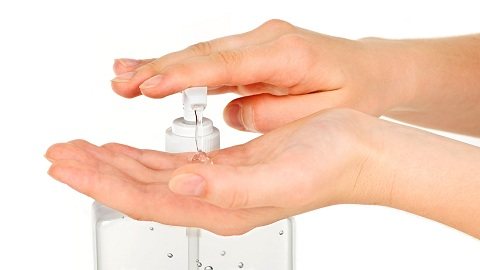
- Only cotton socks and loose, quality shoes should be worn.
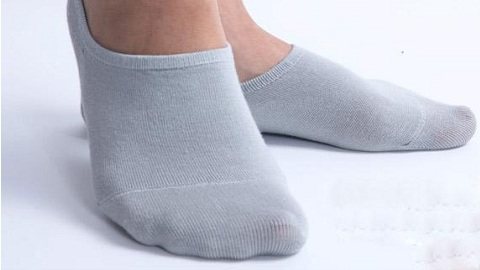
- You need to check with a specialist whether it is possible to wet the sore area.
If you follow all the doctors' requirements, recovery can occur in about three weeks.
How long does it take for a nail to grow after removal?
The time it takes for the nail plate to grow back after removal is influenced by many reasons. The finger must be covered with a breathable patch with an antibacterial effect.
Of course, injury can affect the rate of regrowth and should therefore be avoided. It takes about four months for the nail to fully grow back.
Often, during removal, the nail growth zone is injured, and this leads to an incorrect shape of the growing plate. It is impossible to clearly determine the time, but this occurs most quickly in young people and pregnant women, as well as in the warm season of the year.
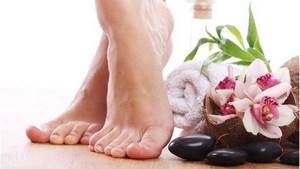
Diagnosis of leukonychia
In China, examination of the condition of nails is a mandatory element of a doctor’s examination, such as in our country, measuring blood pressure, since doctors connect the energy channels of the fingers with internal organs. A healthy person has regularly shaped nails, even, smooth, matte or slightly shiny nail plates.
A change in the normal state of the nails in the absence of exogenous causes suggests an internal pathology that is no more than six months old - it is during this period that the nail completely grows back.
Diagnosis of leukonychia is carried out by a dermatologist, for this purpose the following is usually carried out:
- spectral analysis for trace elements
- scraping for mushrooms
If necessary, he will refer you to other specialized specialists (cardiologist, neurologist, etc.). White spots (leukonychia) are differentiated from:
- Mey's stripes - thallium or arsenic poisoning (5mm white-blue stripes located transversely)
- Onychomycosis is a nail fungus that is characterized by deformation, ingrown nails, bird's nails, discoloration, thickening of the plate, crumbling or splitting of the nail.
Treatment of leukonychia - how to get rid of white spots
The basis of treatment for leukonychia is the elimination or treatment of the cause that caused the symptom. The entire therapeutic complex can be divided into general measures recommended for leukonychia of any etiology, internal treatment and external methods.
General events
- elimination of stressful situations;
- establishing a diet that enriches the diet with protein, vitamins and minerals. Fermented milk products, green vegetables and fruits are healthy;
- normalization of work and rest regimes;
- taking balanced vitamin and mineral complexes.
Internal treatment
If the cause of leukonychia is a somatic pathology, treatment of the underlying disease cannot be avoided. In this case, white spots on the nails are a small part of what the disease can lead to. You can't ignore doctors' orders!
If a fungal infection is detected, systemic or local (usually) antifungal treatment is prescribed for a long period of time with mandatory laboratory monitoring.
External methods
Applicable for exogenous leukonychia. First of all, the root cause of the white spots is eliminated.
- To eliminate a cosmetic defect, you can go to a beauty salon. Local treatment with professional remedies and hand massage to improve blood circulation may be offered.
- During treatment, you should avoid manicures and decorative coatings, and even more so, you should not extend your nails.
- Baths with sea salt. Add 1 tsp to 1 liter of hot water. sea salt. Take a bath for 10-15 minutes.
- Baths with a decoction of oak bark and chamomile (1 tablespoon of raw materials per 1 liter of water). Performs a healing and antiseptic function, indicated for microdamages. Take a warm bath for 10-15 minutes.
- Oil solution of vitamins A and E (Aevit). The capsule with vitamins is pierced and the oil is rubbed into the nail plate. Repeat every day.
- Fish fat . Rub into the affected nail and repeat daily.
- Olive oil and lemon juice. Rub a heated mixture of olive oil and juice (1:1) into the nail plate, repeat 2-3 times a week.
- Homemade “varnish” from a mixture of iodine tincture, olive oil and Aevit: for 60 ml of oil, take 5 drops of iodine tincture and 5 capsules of Aevit. Mix everything and apply it to your nails with a brush before going to bed every day.
Fungus on the big toe nail
- Causes of the disease
- Forms of onychomycosis
- Symptoms of the disease
- Stages of development of onychomycosis
- Fungus treatment
- Lucky
- Cleaning your nails
- Surgical method
- Preparations for internal use
- Prevention of onychomycosis
Onychomycosis of the big toe nail is a fungal infection of the nail plate. Getting into its thickness, the fungus decomposes the tissue, thereby creating a nutrient medium for itself.
Most often, it is the nail of the big toe that is affected, since it is the largest in area and is susceptible to injury more often than others.
Causes of the disease
The causative agent of onychomycosis is usually dermatophyte fungi. They begin their harmful effects in the following cases:
- Reduced immunity. This may be a consequence of inflammatory or endocrine diseases;
- Damage to the nail. May occur due to injury, wearing tight shoes, or damage to the cuticle during cosmetic procedures;
- Increased sweating. The reason for this may be cardiovascular diseases, pathologies of the endocrine system;
- Trophic changes in the lower extremities. This is usually related to the age of the patient. More often, onychomycosis affects older people.
Forms of onychomycosis
- Distal. The nail is affected from the side of the free edge (where the nail is cut);
- Superficial. The surface of the nail plate is affected;
- Lateral. The sides of the nail plate are affected;
- Total. The entire nail is affected by the fungus;
- Proximal. The infection affects the posterior nail fold (base of the nail).
Symptoms of the disease
- Color change. The nail plate loses its transparency. Yellowish spots and furrows appear on it. As the disease develops, the nail may become gray, yellow, brown, green, white, brown or black;
- Thickening of the nail. The keratinization of the nail bed (skin under the nail) becomes a reaction to the introduction of fungus. It is not the nail itself that thickens, but the nail bed. A gap may appear between the nail and the nail bed;
- Nail destruction. This symptom can appear both in the initial stage, after the introduction of infection, and in subsequent stages. It is usually combined with thickening of the nail.
Stages of development of onychomycosis
- Regional defeat. This is an early stage of the disease, in which the damage to the nail plate at the free edge is hardly noticeable. At this stage, narrow yellow-gray stripes appear;
- Normotrophic onychomycosis. The nail remains intact, but yellow spots appear on its surface. The skin under the nail plate is not thickened. The nail itself may move away from the nail plate (onycholysis);
- Hypertrophic onychomycosis. This stage of the disease develops if the patient did not start treatment on time or it was incorrect. The nail becomes yellow and thickens. It becomes lumpy and rises above the edge of the nail bed. The nail crumbles quite easily and can peel off, resulting in pain when walking. The skin under the nail is thick and flaky, in some cases non-healing cracks appear on it. After full treatment, thickening of the nail can persist for up to two years;
- White surface form. Develops if onychomycosis progresses rapidly. It can also occur if the disease has been treated, but the dosage of the antifungal drug was chosen incorrectly (insufficient).
Onychomycosis can be caused by molds. Its development occurs against the background of other diseases. The nail may turn green, black, yellow or brown. The disease can be complicated by inflammation of the periungual bed.
Atrophic onychomycosis is an advanced stage of the disease. The nail becomes thin and brittle and quickly collapses. The skin under the nail is dense and keratinized.
Fungus treatment
Fungus on the big toe is treated by a dermatologist after a preliminary examination. Before using antifungal drugs, it is recommended to conduct the following laboratory tests:
- General analysis of urine and blood;
- Blood chemistry;
- It is advisable to perform an ultrasound of the abdominal organs;
- It is advisable for women to take a pregnancy test (since antifungal drugs are quite toxic and have a negative effect on the fetus).
Depending on the type of fungus, the extent of the lesion, the duration of the disease and the general health of the patient, medications for external or internal use may be prescribed.
Lucky
There are antifungal varnishes that contain ciclopiroxolamine or amorolfine. They are prescribed if only a third of the nail plate is affected, and the disease is no more than a year old. Also, this type of therapy is not used for nail hypertrophy.
Before applying the varnish, the affected part of the nail is removed with a file, and the plate itself is degreased and disinfected with alcohol. When using the drug again, its remnants are removed with a swab soaked in alcohol, and the infected areas of the nail plate are removed again.
A varnish containing amorolfine (Loceryl) is applied 2 times a week during the first month, and once thereafter. Ciclopiroxolamine varnish is used 2–3 times a week. The course of treatment is 4 – 6 months.
Cleaning your nails
This procedure is performed for hypertrophic type of nail damage. To do this, apply a special ointment containing 40% urea to the nail. It softens the affected nail plate and allows it to be removed along with the dead skin. Before this procedure, the nail is trimmed as much as possible and filed with a wet file.
Before treating your nails, be sure to wear medical gloves to prevent infection of your fingernails.
Then, to lubricate the nail bed, use a solution of Nitrofungin, Naftifin or Iodine-acetic acid. Antifungal creams and ointments are also used. External therapy is combined with oral administration of antimycotics (antifungal drugs).
Surgical method
It is used quite rarely, if the use of keratolytics is contraindicated. The disadvantage of this method is trauma to the nail bed and the lack of a basis for restoring the nail plate. In this case, the nail grows unevenly, irregularly shaped and may peel off.
Although the therapeutic effect occurs faster after surgery, the likelihood of relapse remains. In order to maintain the shape of the nail bed and the effectiveness of treatment, Gevol adhesive mass is used. It imitates a nail plate.
Preparations for internal use
The following drugs are used to treat onychomycosis:
- Allylamines: Terbinafine, Lamisil, Lamicon, Thermikon;
- Azoles: Ketoconazole, Fluconazole, Itraconazole.
For the treatment of dermatomycete onychomycosis, which accounts for up to 83% of all fungal infections of the nails, Terbinafine (Lamisil, Lamicon, Termicon) is used. Take the drug 250 mg per day, daily. The course of treatment should last from 84 to 120 days. The medicine can be used to treat children over 2 years of age; in this case, the dosage of the drug depends on the child’s weight.
Reserve drugs (drugs that are prescribed if others are not effective) are Azoles. They are used in different ways:
- Fluconazole. 150 mg once a week. The course of treatment is 3 – 6 months;
- Itraconazole 200 mg daily for 3 months or 200 mg twice daily during the first and fifth weeks of therapy. This drug is not prescribed for children.
When using drugs, side effects may occur such as nausea, vomiting, diarrhea, headache and allergic reactions. During the period of treatment, you should stop drinking alcoholic beverages and adhere to proper nutrition.
Prevention of onychomycosis
- In case of severe sweating of the feet, it is necessary to use special products (creams and deodorants for the feet);
- It is necessary to observe the rules of personal hygiene;
- After washing your feet, carefully wipe the folds between your toes, as fungi love a moist environment;
- Clean bathroom rugs and grates regularly;
- Shoes need to be selected according to size;
- It is worth giving preference to shoes made from natural materials that are highly breathable;
- When taking antibiotics, it is necessary to carry out replacement therapy (periodically change the drug);
- In public places (baths, saunas, swimming pools) you must use your own shoes and do not walk barefoot;
- When trying on shoes in a store, you need to use a sock;
- If you have to stand at work for a long time, you must use removable shoes.
At the first manifestations of the disease, you should consult a specialist.
You can read more about toenail fungus here.
| Did the article help you? : |
What do white spots on nails mean?
White spots on nails are medically called leukonychia. This is a pathological change in the nail plate, characterized by the appearance of dotted, stripe-like or large areas of white color.
The appearance of the nail plate of the hands is a sensitive indicator of a person’s general health. The condition of the nails reflects the changes that have occurred in the body over the past six months. This is exactly how long it takes to completely update the plates.
Dermatologists say the main reason for changes in the appearance of nails is a violation of the keratization process. Despite the fact that the horny tissue of nails is a very durable formation, various factors can disrupt its structure. Sometimes air accumulates in the layers of the horny tissue of the nails.
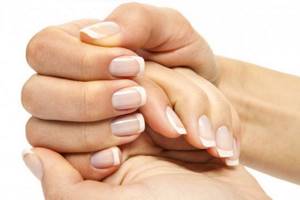
It is these air inclusions that look like white spots on the plates.
Among people, there are various signs associated with white spots on nails, and defects on specific fingers can mean something: the ring, middle, index, little finger. But official medicine identifies its reasons for the appearance of white spots.
Diagnosis in such cases includes a study of spectral analysis of nails for the presence of microelements, scraping from the nail plates to identify pathogenic fungi.
To establish the true cause of their formation, to find out what exactly disrupted the keratization process, you should visit a dermatologist and conduct a functional diagnosis of the body.
Causes of the disease
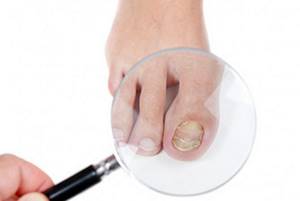
The nail must be examined carefully
The basis for changes in nail color is the pathology of their formation. To determine the reason why air microbubbles may appear on the nails, the patient needs to visit a dermatologist. Nail regrowth takes about six months. The doctor pays special attention to this period in the patient’s life.
If the white coating on the nail is the result of an injury, no additional treatment will be needed. A neat, gentle pedicure will remove exfoliated areas, and the nail plate will grow back on its own in six months.
Your doctor may prescribe a multivitamin supplement to improve growth and structure. If a white toenail is caused by wearing tight shoes or shoes with too narrow a toe, the patient needs to get rid of this habit.
If the plates begin to turn white due to the application of decorative cosmetics to them, its use should be excluded. Fungal infection is a fairly common disease among the adult population. Additional signs indicating a fungal infection are:
- unpleasant odor;
- brittleness and crumbling of the nail surface;
- soreness around the lesion.
For a more complete diagnosis of fungal infection, a culture of the nail is performed and a fragment of it is studied. The doctor may request a spectral analysis to distinguish between fungal infection and chemical damage. If, during the diagnosis, the doctor is alerted by the symptoms of the patient’s internal state, a general blood test will be prescribed. This method allows you to reliably find out why white spots appeared on your nails.
There are many reasons for the change. They can be caused by:
- diabetes;
- allergies, dermatitis;
- jaundice;
- various fungi
- psoriasis;
- renal failure;
- damage to the lungs and heart, leading to tissue oxygen deficiency.
A change in nail color can also occur due to smoking or mechanical trauma.
White spots indicate a lack of calcium or zinc. A white spot on the big toe nail in the area of the hole indicates kidney pathology. If it turns yellow, the lymphatic or respiratory system is affected, this may also be a sign of cancer and diabetes.
Why do white spots appear on nails?
Dermatologists conventionally designate the provoking factors that cause white dots and stripes to appear on the nails as external and internal.
External causes of the formation of white spots on nails:
- injury to the nail plate due to a blow to the nail or pinching is the most common and most harmless cause of the problem for the body;
- incorrect cuticle removal process during unprofessional manicure, damage to the nail plate;
- using liquids containing acetone or solvents not intended for these purposes to remove nail polish;
- the use of low-quality products in the manicure process to cover the nail plates - varnishes, base coats, top coats, etc.;
- extension of artificial nails, gluing of decorative elements;
- habit of biting nails;
- contact with household chemicals without gloves;
- squeezing the toes with shoes that don't fit properly or with narrow toes - white spots appear on the toenails.
Internal causes of white spots on nails:
- fungal infection on the nails;
- malnutrition, deficiency in the diet of foods rich in zinc, iron, calcium;
- hunger strikes or strict diets;
- disruption of the metabolic process in the body;
- chemical poisoning (in particular, arsenic);
- anemia;
- anorexia;
- enteritis, colitis;
- intestinal dysbiosis;
- cardiovascular disease;
- liver diseases - cirrhosis, hepatitis C;
- chronic kidney pathologies;
- severe depressive states, mental disorders, nervous breakdowns and exhaustion.
Thus, white spots on nails can be an external manifestation of serious problems with the health of internal organs and systems. Therefore, when such marks appear on the plates, it is imperative to find out the cause and engage in treatment.
Soft peeling nails
“The most common causes of soft, split-prone nails are prolonged use of detergents or solvents, as well as nutrient deficiencies, particularly silica,” says Tracy Winder. - Your nails may also begin to thin and peel due to certain prescription medications, lack of sleep, exercise, and poor diet. To prevent this problem, make sure your diet is rich in silicon, a mineral that speeds up nail growth and helps them be more flexible "
Drug treatment of white spots on nails
After diagnosing and finding the cause of the appearance of white spots, the dermatologist will prescribe appropriate drug therapy. These may be means:
- restorative,
- hormonal,
- cardiological,
- hepatoprotective,
- antifungal.
The general recommendations of a dermatologist are aimed at adjusting lifestyle, changing diet and eating habits, maintaining a balance between work and rest.
To keep your nails healthy, you need to eat more foods rich in protein, minerals and vitamins. One option is a predominantly plant-based diet, rich in fermented milk products, fresh vegetables and fruits. If vitamin deficiency is diagnosed, the doctor additionally prescribes multivitamin preparations.
If white spots appear on the nail plates during pregnancy, as a rule, this indicates the development of anemia. In this case, taking iron supplements will help eliminate the symptom and remove white spots.
It is usually recommended to take vitamin complexes, establish proper nutrition, be sure to take daily walks in the fresh air and follow a daily routine.
If you observe white spots on a child’s nails, you can conclude that there is a lack of minerals and vitamins in the growing body. Pediatricians try to prescribe medications for children only in extreme cases.
Homemade recipes for white spots on nails
If, after consulting a doctor and examination, it turns out that there are no serious reasons for the formation of white spots, then folk recipes can be used to remove this cosmetic defect.
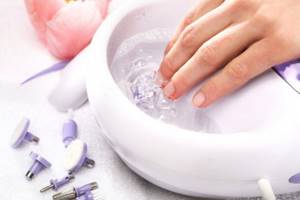
Various baths and masks for nails will help restore their attractive appearance.
Use the following homemade recipes:
- Rub liquid vitamins into your nail plates. For these purposes, you can take capsule vitamin E or A, crush the ampoule and apply the product.
- Give your nails a bath with sea salt. Dissolve 2 tbsp in half a liter of warm water. salt. Soak your fingers in the solution for 25 minutes. Then rinse with cold water and apply castor oil.
- Use fish oil. Rub this product into your nails, massaging the nail plates for about 5 minutes, then rinse off the fat with water.
- Mix 3 drops of iodine with 5 drops of vitamin A and 60-65 ml of olive or almond oil. Rub the mixture into your nails for 10-15 minutes.
Give your nails a lemon mask. Take 1 tbsp. lemon juice and 1/2 cup vegetable oil. Heat the mixture in a water bath, dip your fingers in it for 10-15 minutes. Finally, lubricate your nails with fish oil or liquid vitamin A.
Apply homemade polish to your nails. It has a strengthening and healing effect on the nail plate. Homemade varnish is prepared from 60 ml of olive oil, 5 drops of iodine and 5 capsules of the drug “Aevit”. Heat the oil, add iodine and Aevit. Mix and apply to nails daily before bed.
Friends, hello everyone! Do you know what white spots on your nails mean?
Many people interpret these phenomena differently.
Some attribute mystical properties to them, others say that there is no magic here, and they don’t mean anything at all, they say, they appeared and passed away, and that’s business...
Still others argue that these spots are by no means harmless, and it would be stupid not to pay attention to them, since they are a kind of sign, a signal from our body.
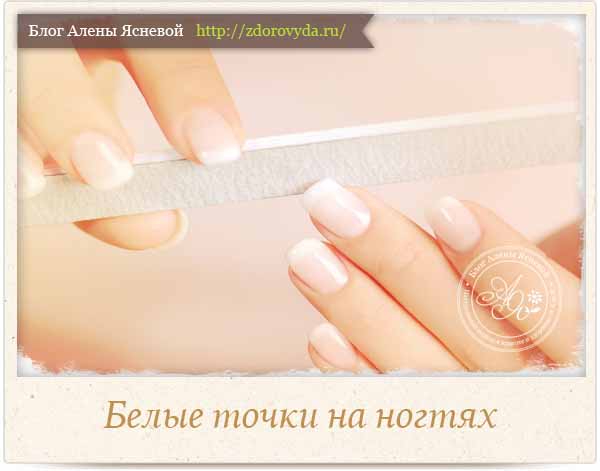
In this way he wants to tell us something about our inner state.
What position do you take? Write in the comments, I’m very interested!
What do white spots on nails really mean?
From this article you will learn:
How to restore a damaged nail plate?
While you are fighting the root cause or treating nail diseases, do not forget about aesthetics. You can restore damaged nails using some manicure techniques.
Strengthening with acrylic powder – strength and durability
A layer of acrylic powder will create an additional “shield”, thanks to which the nail will not bend or break, and the color coating will last a long time.
Leveling with gel polish or biogel - eliminating defects
If the surface of the nail plate is uneven, there are pits or bulges on it, they can be “filled” with biogel or a thick rubber base.
Bio-reinforcement – strengthening and repairing cracked nails
Bio-reinforcement is the restoration of natural nails using fibroin (mulberry protein) and bio-coating. Using this procedure you can: ✓ Strengthen artificial turf
✓ Repair a cracked or chipped nail ✓ Level the nail plate
Paraffin therapy – for dryness and microcracks
The master applies a nourishing composition to the hands and nails, and then “seals” it with hot liquid paraffin. Thus, a “greenhouse effect” is created, and beneficial substances penetrate deeper into the tissues.
Sealing nails - reducing brittleness and healthy appearance
Sealing is a salon procedure. The nail artist rubs a substance based on honey and beeswax into the nail plate. A thin film is formed on the surface of the nail, which reduces fragility, protects against damage and gives the nails a healthy appearance.
Therapeutic coatings – health and radiant appearance
Special medicated nail coatings are sold in pharmacies and cosmetic stores. And the procedure can be performed both in the salon and at home.
Hand masks – nourishing and restoring skin and nails
Masks with plant extracts restore water balance, nourish nails, enrich them with vitamins and microelements.
Cosmetic oils - nourishing and strengthening the nail plate
If your nails are thin, super soft, or extremely brittle, lubricate them regularly with cosmetic oil. This way the nail plate will receive additional nutrition and begin to heal itself.

